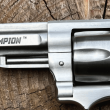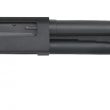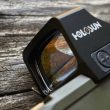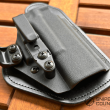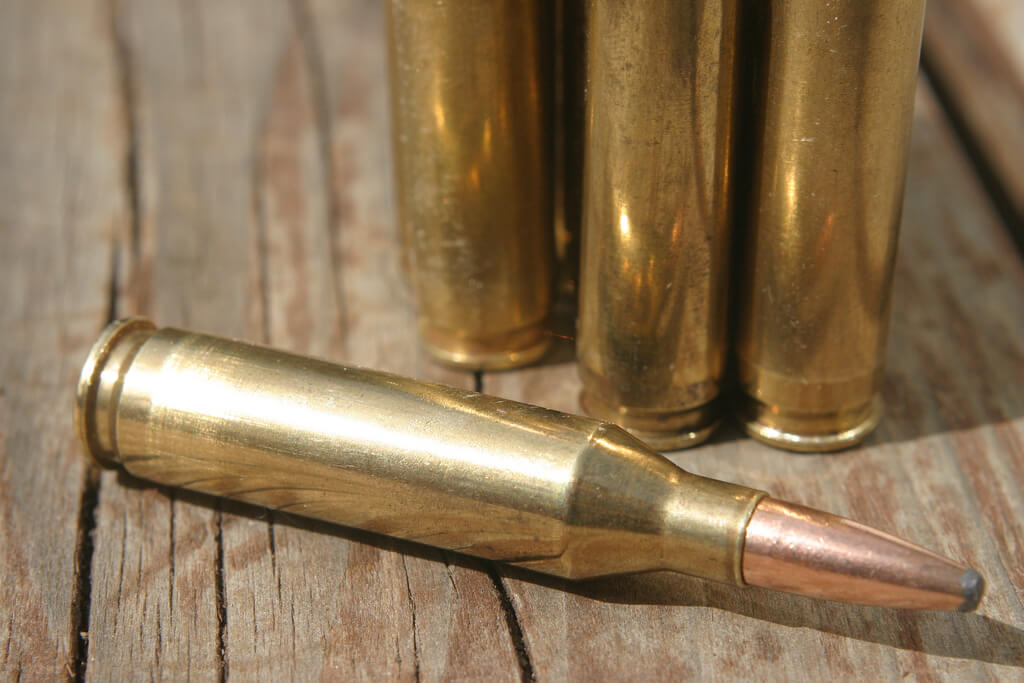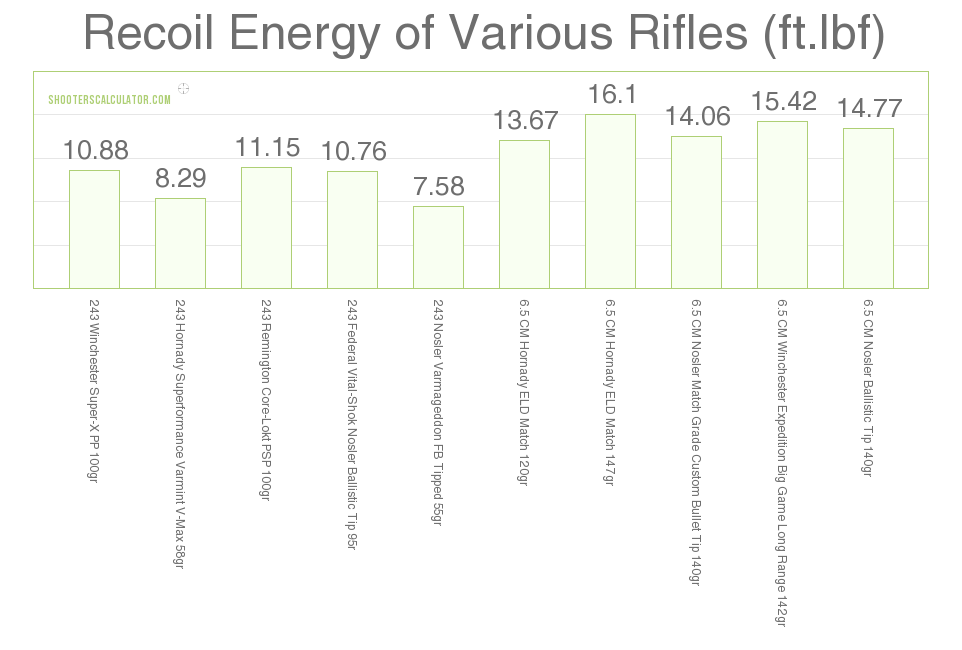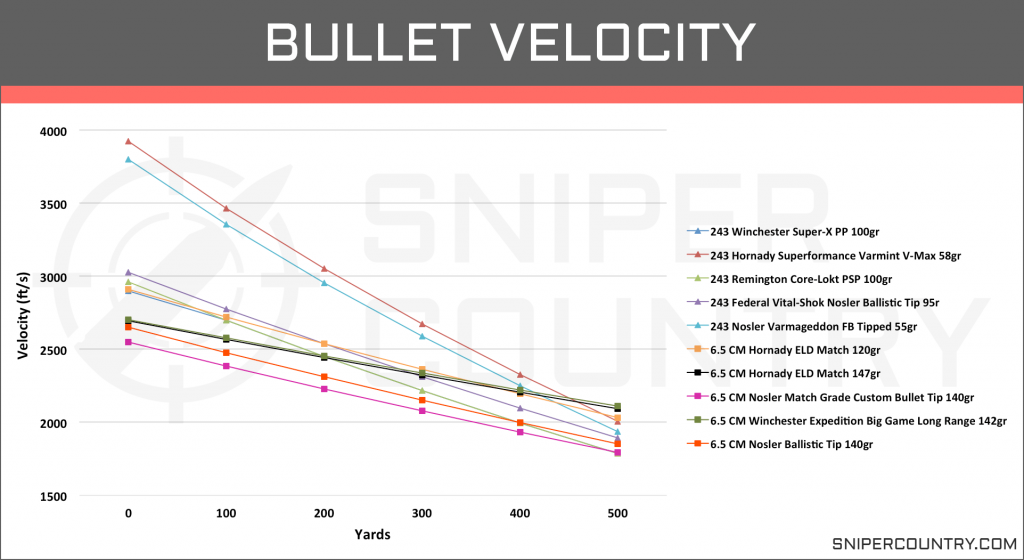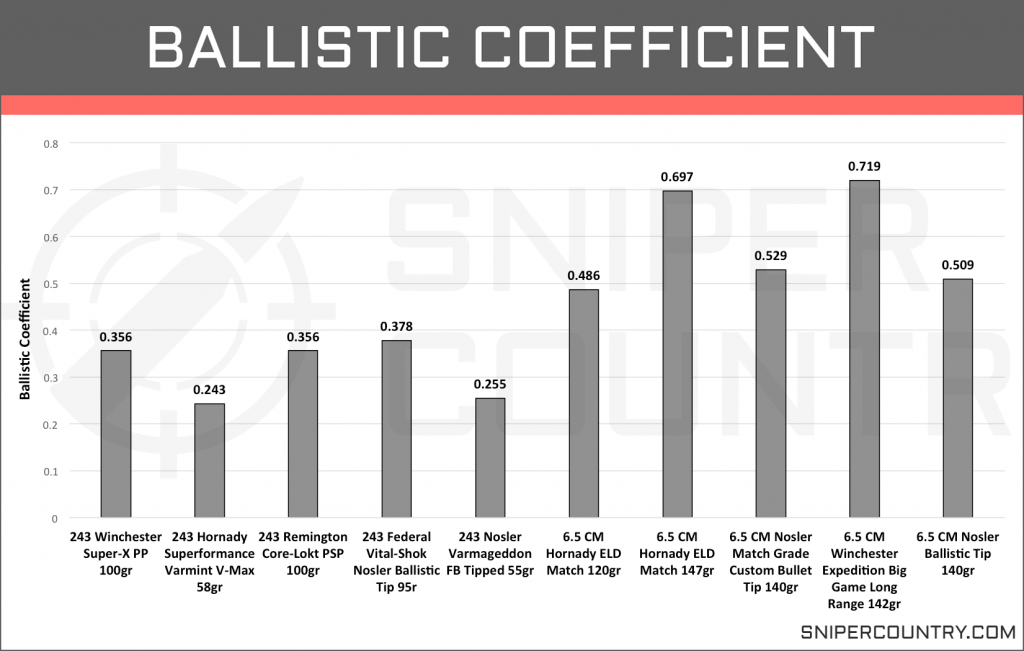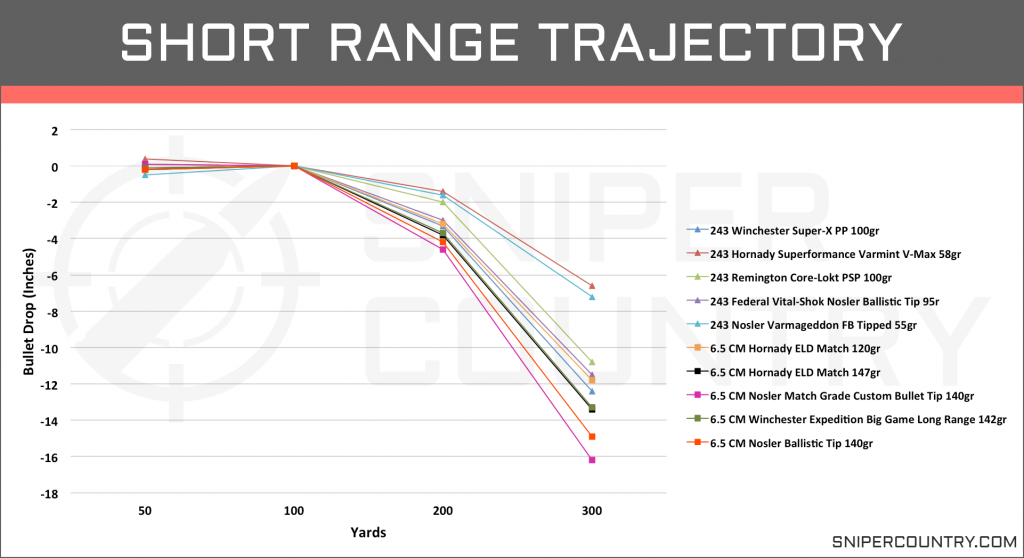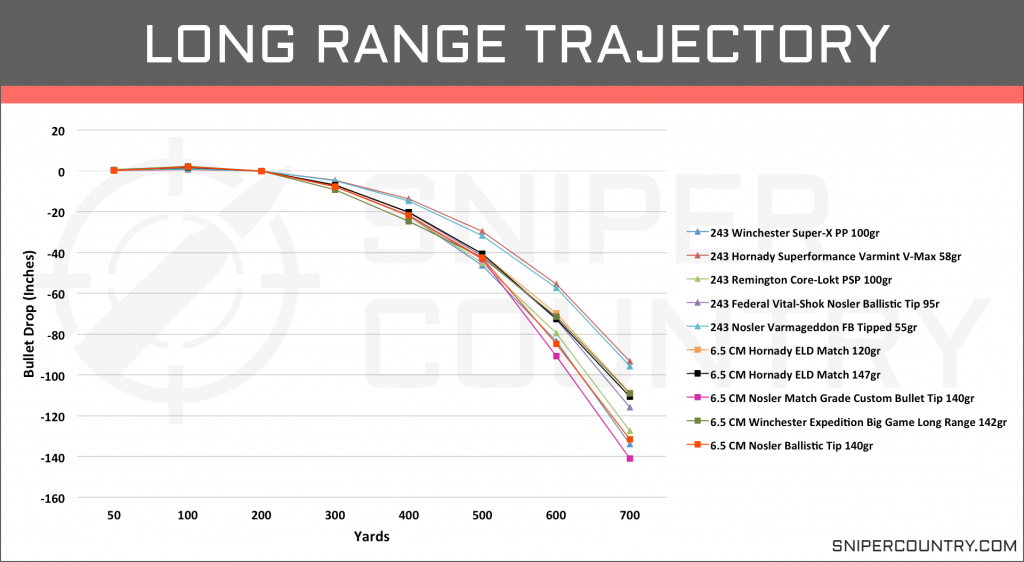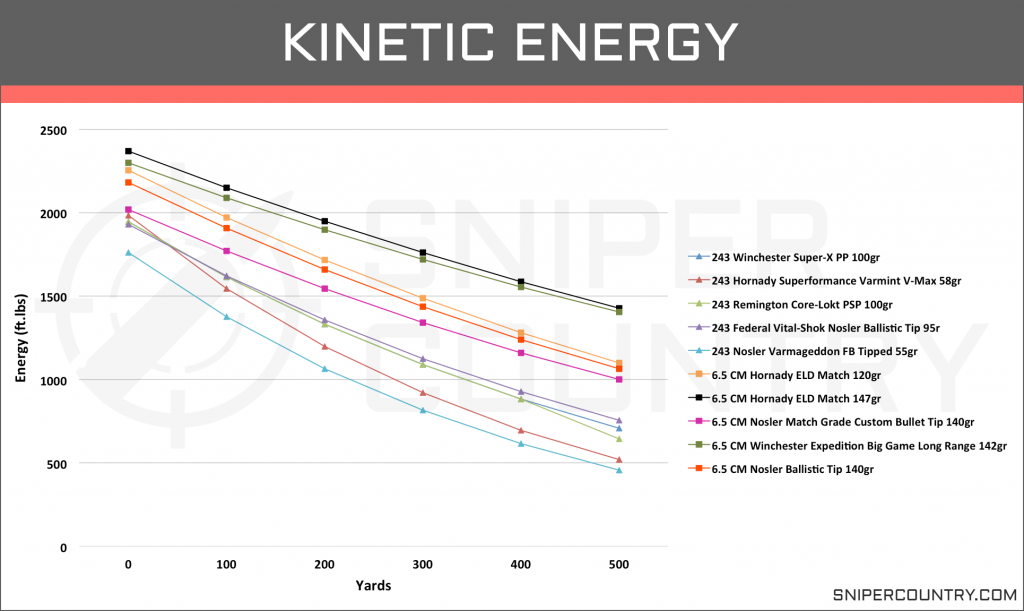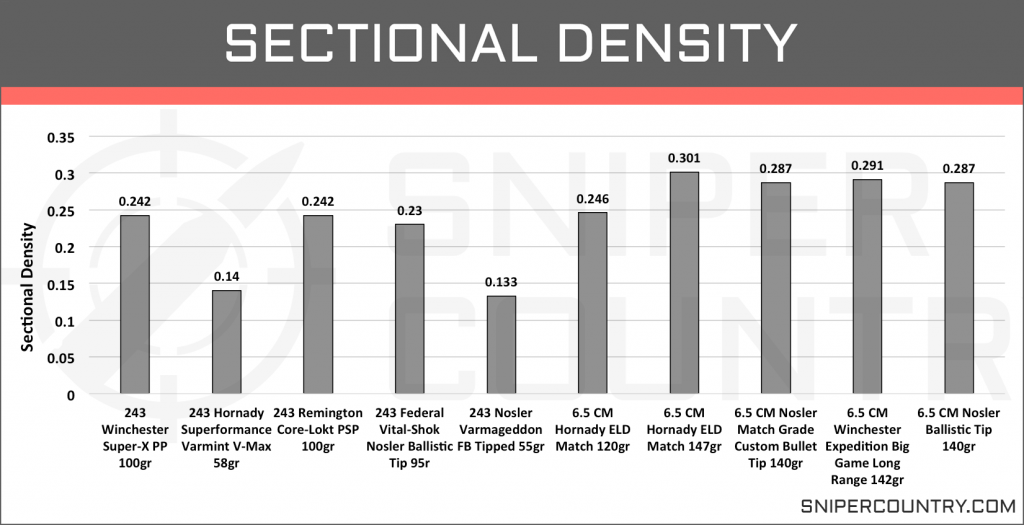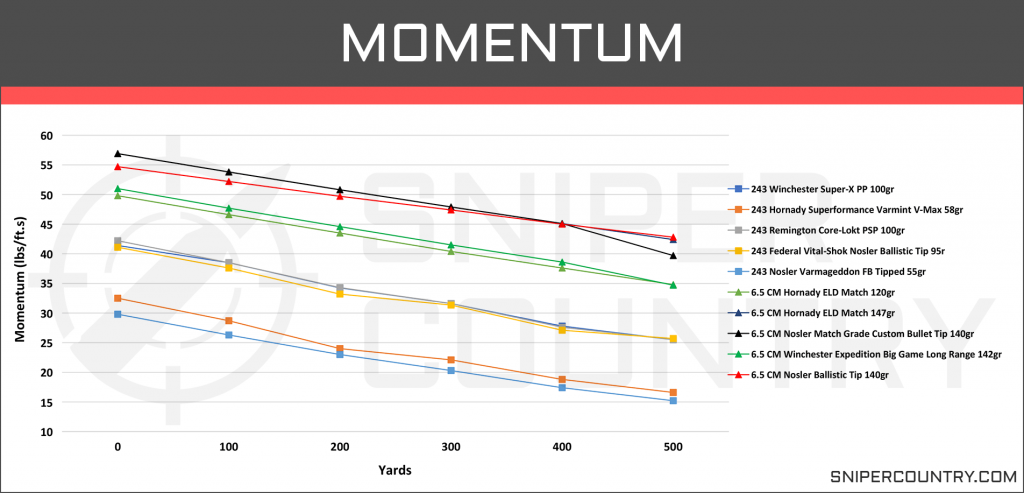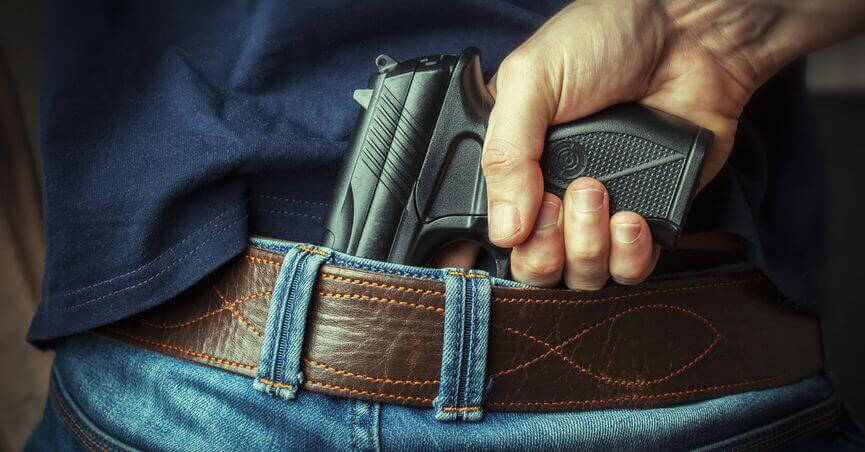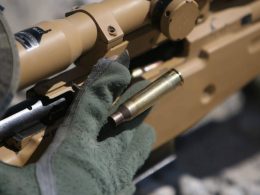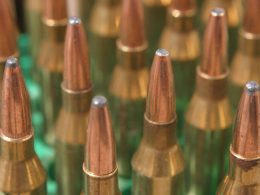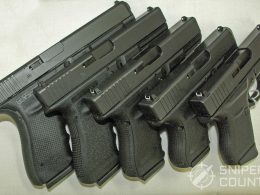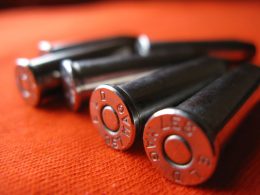In this Article:
In this comparison of cartridges, we will examine the 6.5 Creedmoor versus .243 Winchester. This analysis is particularly intriguing because both cartridges are highly versatile in both hunting and competitive shooting. Surprisingly, there is not much detailed comparison available directly contrasting these two cartridges.
Arguments abound for using either of these cartridges, and while the 6.5 CM often receives high praise, which is well-deserved, we believe the .243 Win also possesses considerable strengths that merit exploration in this article. Some might categorize this as a clash between new and old schools of thought, but we view it more as an assessment of two cartridges, each capable of impressive feats in skilled hands.
There is significant overlap in the shooting applications of these cartridges, prompting consideration of which one excels overall. However, our aim in these comparisons is not to declare one cartridge superior to the other. Instead, we intend to delve into the specifics and let the data guide us towards understanding which cartridge is better suited for various applications.
A Brief History
Some individuals might not find the origin of these cartridges particularly captivating, yet we believe a brief background on the cartridges under review is essential. Understanding their introduction and significance to both hunters and competitive shooters is crucial.
6.5mm Creedmoor
While still relatively unknown to many hunters, the 6.5 Creedmoor has been a presence for quite some time. Although it hasn’t achieved the widespread adoption of more established hunting and range cartridges with decades of use, its evolution has allowed a deeper understanding of its capabilities and limitations.
Introduced in 2008, the 6.5 Creedmoor addressed the shortcomings of other 6mm rounds that required exceptionally high pressures for desired long-range performance. Its design accommodated long, slender bullets within the casing without sacrificing space needed for additional powder. This innovation proved crucial as the streamlined bullets required less force for accurate long-range performance—ideal for precision shooters.
The 6.5 CM has swiftly gained favor in long-range competitive shooting circles. Its popularity in hunting circles hasn’t matched its competitive shooting success, but recent advancements in hunting rounds have started to sway even the staunchest defenders of traditional hunting cartridges towards acknowledging the advantages of the 6.5 Creedmoor.
.243 Winchester
In contrast to the 6.5 CM, the .243 Win boasts a much richer history. Introduced in 1955, the .243, often referred to as the “baby brother of the .308,” is a necked down version of the .308 Win. At its inception, this cartridge filled a significant niche in the hunting community.
What distinguished the .243 was its ability to serve as a long-range hunting round capable of accommodating lighter bullets ideal for target shooting and varmint hunting. While recognized for its effectiveness in varmint and target scenarios, it has also proven itself as a capable deer hunting cartridge, albeit at shorter ranges. This underscores the versatility of the .243 Win.
The .243 Win quickly gained popularity in the United States, offering hunters a highly adaptable cartridge suitable for various hunting conditions. Bullet weight options for the .243 range from 55 to 115 grains, with most hunting cartridges typically maxing out at 100 grains.
Moreover, the .243 Win has earned a distinguished reputation in competitive shooting circles. Despite newer cartridges capturing attention in the shooting community, the .243 continues to be utilized by top marksmen worldwide and remains competitive in shooting competitions.
Specs
| 6.5 CM | .243 Win | |
|---|---|---|
| Parent Casing | .30 TC | .308 Win |
| Bullet Diameter | 0.264" | 0.243" |
| Neck Diameter | .2950" | 0.276" |
| Case Length | 1.92" | 2.045" |
| Overall Length | 2.825" | 2.7098" |
| Case Capacity | 52.5gr | 53-54.8gr |
| Max Pressure (SAAMI) | 62,000psi | 60,000psi |
From the specifications of these cartridges, we observe intriguing similarities between the two. The 6.5 CM accommodates a slightly larger caliber bullet than the .243 Win and boasts a slightly longer overall cartridge length. Both cartridges also have a similar capacity for holding powder.
What is unique about the 6.5 CM is how shallow the bullet sets in the casing when compared to the .243. This is a big advantage for several reasons and is also why a lot of shooters who hand load their brass really like this cartridge. It frees up a lot of space in the casing for extra powder, that is usually just left free with most factory loads.
The 6.5 Creedmoor can take heavier bullets than the .243 Win. Still, both cartridges are not too far off in their dimensions. It will be interesting to see how these small differences influence their ballistic and other performance categories.
To do this, we have selected five rounds from each cartridge that encompass a range of bullet weights as well as popular factory loads for both hunting and range shooting. We do like to mention that this selection is only a small sample size for what is available on the market, but for clarity and length purposes, we have to narrow down to only ten selections which are listed below.
 6.5 CM Hornady ELD Match 120gr
6.5 CM Hornady ELD Match 120gr 6.5 CM Hornady ELD Match 147gr
6.5 CM Hornady ELD Match 147gr 6.5 CM Nosler Match Grade Custom Bullet Tip 140gr
6.5 CM Nosler Match Grade Custom Bullet Tip 140gr 6.5 CM Winchester Expedition Big Game Long Range 142gr
6.5 CM Winchester Expedition Big Game Long Range 142gr 6.5 CM Nosler Ballistic Tip 140gr
6.5 CM Nosler Ballistic Tip 140gr
 .243 Winchester Super-X Power Point 100gr
.243 Winchester Super-X Power Point 100gr .243 Hornady Superformance Varmint V-Max 58gr
.243 Hornady Superformance Varmint V-Max 58gr .243 Remington Core-Lokt PSP 100gr
.243 Remington Core-Lokt PSP 100gr .243 Federal Vital-Shok Nosler Ballistic Tip 95gr
.243 Federal Vital-Shok Nosler Ballistic Tip 95gr .243 Nosler Varmageddon FB Tipped 55gr
.243 Nosler Varmageddon FB Tipped 55gr
To be more thorough and to give everyone as much information as possible in an orderly and accessible manner, we have also compiled more rounds for each cartridge although we will not be graphing these rounds or discussing them in as much detail. We have calculated and compiled all the data for these rounds and will present the applicable numbers at the end of each section. This will help back up our claims that the small sample sizes we will look at in more detail are an accurate representation of the two cartridges and it just gives us some more talking points that might be interesting and educational.
Another brief topic we want to address before moving on is the data we are looking at. These are factory loads, and the performance data we are looking at comes from the manufacturer’s website and well-trusted and accurate ballistic performance calculators. While this is fine for comparing specific rounds, it doesn’t mean that the numbers are set in stone.
Shooting these rounds from your personal platform might result in slightly slower velocities or different trajectories when compared to this data or another shooter. It’s a common occurrence, and unless you have access to all of the cartridges, firearms chambered for them, and the instruments to take measurements, computer-generated data is the best source of comparison and will be consistent from round to round. What we are saying is that the differences in performance here will translate to differences in performance for you when using the same firearms.
Recoil
While recoil is a category that does warrant inspection, we acknowledge that most experienced hunters and marksmen prioritize other aspects in their comparisons. However, recoil can be intimidating for newcomers to the sport and may influence their decision-making process.
For this reason, we are going to spend a little time discussing it in the context of the 6.5 Creedmoor vs .243. Right off the bat, we will come and say that there are many more cartridges with much fiercer recoil than these two that we are comparing. Still, some might be interested in how this two stack up to one another.
Using a ballistics calculator, we calculated the recoil energy (in ft. lbs) generated by firing each of the ten factory loads selected for comparison. Several factors influence recoil, such as bullet weight, powder charge, and firearm weight. For comparison, we have kept the firearm weight constant for each round and have picked a conservative powder charge for each cartridge that remained constant.
We should also note that the recoil energy is different from the “felt recoil” or kick that you feel when firing. Though, the amount of recoil energy that is generated should translate roughly to the amount of felt recoil.
So, let’s take a look at the recoil energy generated from the ten factory loads (Graph 1).
To calculate this data, we used the provided muzzle velocity from each round, a 7lb rifle for all rounds, and an average powder charge that was provided by several common and reliable loading sources. We opted for slightly conservative powder charges since factory loads are typically not loaded to maximum capacity.
From this graph, we see that the 6.5 CM rounds have anywhere from 3-9 more ft. lbs of energy than the .243 Win rounds. It’s pretty obvious that the 6.5 CM rounds generate more recoil, but we have to put it into perspective. The amount of recoil that the 6.5 CM rounds are generating is still relatively light compared to other hunting and long-range rounds.
Conversely, the .243 rounds demonstrate considerably less recoil, which aligns with expectations given their lighter bullets and similar powder charges. These rounds barely exceed the 10 ft. lbs mark, making the .243 a popular choice for younger or less experienced shooters looking to gain confidence. However, this characteristic of light recoil should not be underestimated by experienced shooters either, as it can offer significant advantages in various shooting scenarios, provided other performance aspects of the cartridge meet the required criteria.
Overall, both the .243 Win and the 6.5 CM are easily manageable in terms of recoil for most shooters.
Next, let’s examine the average recoil numbers derived from our expanded dataset. The recoil energy generated for each round was collected using the same methodology described earlier.
| 6.5mm Creedmoor | .243 Winchester |
|---|---|
| 15.7 | 11.25 |
With the expanded dataset, the overall trend between the 6.5mm Creedmoor and .243 Winchester remains consistent. The averages show a slight increase compared to the smaller sample, reaffirming that the 6.5mm Creedmoor generates a few more ft. lbs of recoil energy than the .243 Win on average. Despite this difference, both cartridges are generally regarded as having relatively light recoil compared to other modern centerfire cartridges. This characteristic makes them more manageable for a wide range of shooters, contributing to their popularity in various shooting disciplines and hunting scenarios.
Ballistics
For anyone weighing a decision between two cartridges, understanding their ballistics is crucial. Whether for hunting or competitive shooting, comprehending how a cartridge performs after being fired is essential for consistent shooting success.
In this section, we will examine several ballistic categories: velocity, ballistic coefficients (BC), and the short and long-range trajectory of the two cartridges under comparison. These metrics will provide insights into the strengths and weaknesses of each cartridge, helping us determine their suitability for different applications as we progress through the comparison.
Velocity
Velocity is a critical performance metric when comparing cartridges or understanding your preferred round. It’s not just a standalone characteristic; rather, it profoundly influences other aspects such as recoil, trajectory, and even the bullet’s stopping power. The velocity of a bullet and how well it maintains speed along its flight path provide valuable insights into its terminal ballistics.
Moreover, velocity correlates with accuracy. A well-stabilized bullet with high velocities is less susceptible to environmental factors that can divert its trajectory. However, factors like twist rate and shooter skill are equally crucial. A high-velocity round paired with the wrong rifle setup or poor shooting technique can negate its advantages.
Therefore, it’s essential not to view velocity in isolation, especially when comparing cartridges. While we’re examining it here for the sake of comparison, it’s a concept that should always be kept in mind. Even with comprehensive data, a mismatched rifle or inexperienced shooter can quickly nullify the benefits of high velocity.
Now, let’s analyze our ten selected rounds and observe if any notable trends emerge when comparing their velocities (see Graph 2).
We compiled this data from the manufacturer’s website. We are looking at the velocity (ft/s) from the muzzle out to 100 yards.
Right out of the muzzle, the .243 rounds show a significantly higher amount of velocity. Remember that the .243 rounds are using much lighter bullet weights than the 6.5 CM rounds but have very similar powder charges. You might have also noticed that the .243 rounds tend to bleed off velocity at a much higher rate than the 6.5 CM rounds.
At the 100 and 200 mark, we still see the .243 round showing higher overall velocities than the majority of the 6.5 Cm rounds, though the 120 gr Hornady Match 6.5 CM round matches the velocity of the three .243 rounds.
At the 300 and 400 yard mark, more of the 6.5 CM rounds begin to even out with the bleeding .243 Win rounds.
As we get out to the 500-yard mark, the two lightweight .243 rounds have bled off a tremendous amount of velocity and are now lower than three of the 6.5 CM rounds.
By the 500-yard mark, the lighter .243 rounds have lost a significant amount of velocity and are now lower than three of the 6.5 CM rounds. Despite variations in velocities across different rounds for each cartridge, both maintain supersonic speeds out to 500 yards. The 6.5 CM rounds generally exhibit better velocity retention compared to the .243 rounds, often showing similar or higher velocities by the 300-yard mark despite using heavier bullets. Below, you’ll find the averages for supersonic velocities for both cartridges based on the larger dataset.
Let’s take a look at the velocity averages for both cartridges when using the larger data set.
Average Velocity (ft/s)
| Yards | 6.5 CM | .243 Win |
|---|---|---|
| Muzzle | 2775.8 | 3198.7 |
| 100 | 2605.2 | 2897.19 |
| 200 | 2440.5 | 2626.3 |
| 300 | 2282.1 | 2355 |
| 400 | 2129.8 | 2061.7 |
| 500 | 1980.5 | 1891.9 |
The numbers are very similar to what we just saw between these rounds. From the muzzle out to 300 yards, we see that the .243 Win has, on average, higher velocity than the 6.5 Creedmoor rounds. From that marker, the 6.5 Creedmoor overtakes the .243 Win and carries higher velocities than the .243 that bleeds off velocity at a much higher rate.
It’s also important to note that the .243 does include several rounds that fall beneath the 60gr bullet weight which is significantly lighter than other .243 Win and 6.5 Creedmoor rounds. To make sure that the numbers were not being skewed too disproportionately, we calculated the average for the .243 Win rounds with the three sub-60gr rounds removed. The average at the muzzle with these rounds removed was 3,073fps and 1878fps at 500 yards. Although this adjustment lowered the average, the conclusions regarding velocity comparisons between the two cartridges remain consistent.
Given the reputation of these two cartridges and their unquestionable propensity for gaining the trust of long range marksman, we felt that it was important for us to also look at the averages for how long rounds of both the .243 and the 6.5CM remain in supersonic flight, which you will find below.
Before I was ever introduced to long range shooting, this category was never in my mind when thinking about cartridges and rounds and their benefits or drawbacks. That’s because nearly all centerfire cartridges used within the confines of hunting are well above supersonic speeds. When you get to the extreme distance shots with targets sitting 700 to 1,000 yards away, how long the round remains supersonic becomes relevant.
This is because a bullet at supersonic speeds, and a barrel and upper that stabilizes it properly, is going to be more stable and thus, easier to make shot adjustments and have a decent idea of where the bullet is going to end up. When a round falls below this threshold, the bullet’s stability decreases and it is much more prone to being influenced by environmental conditions which makes those pre-shot adjustments more complex. For myself and probably a lot of you, 1,000 yard shots, even with the advantage of a round remaining supersonic does not help our chances. I just do not have the seemingly unnatural talent that some of you might possess for these types of shots. But for those of you who do or believe you are well on your way to having, this data might be interesting.
Average Supersonic Limit (Yards)
| 6.5mm Creedmoor | .243 Winchester |
|---|---|
| 1294.4 | 957.5 |
Between the 6.5mm Creedmoor and the .243 Win, there’s a notable difference in their supersonic flight capabilities. On average, the 6.5mm Creedmoor maintains supersonic speeds for a little over 300 extra yards compared to the .243 Win, which averages just under 1,000 yards.
While there are several .243 Win rounds that can reach beyond 1,000 yards, the 6.5CM clearly holds an advantage in this regard. Many 6.5CM rounds can sustain supersonic flight beyond 1,200 yards, with some even reaching distances of 1,500 to 1,600 yards. This extended supersonic range can be advantageous for long-range shooters, providing greater stability and predictability in trajectory over extended distances.
Ballistic Coefficient
The ballistic coefficient (BC) holds significant importance for marksmen, yet some may overlook its value. Derived from specific cartridge specifications, the BC reflects how streamlined a bullet is and directly influences its performance in terms of resistance to drag and wind drift.
In simple terms, a higher BC indicates that a bullet can maintain its velocity and trajectory better in the presence of wind, making it more suitable for long-range shooting scenarios where wind conditions are a critical factor. This characteristic is equally beneficial for hunting, where minimizing the impact of windy conditions can improve shot accuracy.
In the simplest explanation possible, the ballistic coefficient gives you an idea of how well a bullet is streamlined. The higher the BC, the better the bullet can cut through the wind, meaning it resists drag and wind drift much more efficiently than a bullet with a lower BC. SO, for long range shooting where wind might be more of a factor, a better ballistic coefficient is something you might be looking for. Even for hunting, where windy conditions are sometimes a factor, having a bullet with a high ballistic coefficient is going to aid in long range shots.
While the detailed physics and mathematical formula behind BC calculations are complex and beyond the scope of this article, understanding its implications can greatly enhance shooting proficiency. To illustrate the differences, we have compiled the BCs for all ten rounds used in our comparison and presented them in a bar graph (see Graph 3).
The comparison reveals a clear advantage in ballistic coefficients (BC) for the 6.5 Creedmoor over the .243 Winchester. All 6.5 Creedmoor rounds analyzed have BCs exceeding .486, with two notably high at .697 and .719. In contrast, the .243 rounds range between .243 and .378.
And we are aware that we are only looking at five rounds for each cartridge. There are .243 rounds out there loaded with bullets with much better BCs than some of the rounds we are looking at here. Though the case, the 6.5 CM rounds are going to show better BCs than the .243 rounds.
This is a large enough difference between the two cartridge types to bring about changes in how these rounds would perform in the field. We will come back to this topic several times in the next few sections.
Let’s see if this gap between the two cartridges remains when we include more rounds to analyze.
Average Ballistic Coefficient
| 6.5mm Creedmoor | .243 Winchester |
|---|---|
| 0.537 | 0.343 |
Like the smaller sample size, we see a pretty large gap between the averages of these two cartridges. While there is less than 2 tenths difference in BC, it is still a fair gap in the context of ballistic coefficients. If you take a look at the individual rounds, the gap between the two cartridges seems more distinctive. There are many 6.5 CM rounds that are well above the average number with several in the 0.6 and even 0.7 range. On the other hand, a .243 Win factory load with a BC above 0.4 tends to be the higher end of the range. There are certainly 0.243 Win rounds available with better BCs but they still seem to fall below their 6.5mm counterparts that are available.
It’s important to consider that not every round is optimized for long-range shooting when analyzing these figures. In many scenarios, a BC of 0.5 is not a necessity; although desirable, a round can effectively fulfill its intended tasks even with a 0.3 BC. These numbers are juxtaposed solely to identify any distinctions or similarities between the two cartridges. Ultimately, the selection between individual rounds should be based on your specific shooting requirements.
Trajectory
When comparing two cartridges, the trajectory of their flight path is always a significant point of discussion. This becomes even more pronounced when considering the 6.5 Creedmoor, currently one of the more popular choices for long-distance precision shooting. While the .243 remains a capable performer, its use in long-range shooting has diminished with the emergence of newer cartridges.
Nevertheless, it’s crucial to evaluate the flatness of trajectory for both cartridges in practical shooting scenarios. We will examine their performance at both long ranges and shorter distances. The .243 enjoys greater popularity as a hunting round, although the expanding variety of options in 6.5 CM is gaining traction within the hunting community as well. Therefore, we will also assess the trajectory at shorter distances that are more relevant to hunting small to medium-sized game.
Short Range Trajectory
So, for the short range trajectory, we are looking at the bullet drop (inches) from the 50 yards out to 300 yards with the firearm zeroed in at 100 yards (Graph 4).
At the 200-yard mark, which is 100 yards beyond the zero setting, noticeable differences between the two cartridges emerge. The lighter .243 rounds exhibit nearly 2 inches less bullet drop, though all rounds fall within the -4.6 to -1.4 inch range. The heavier .243 bullets show a trajectory more akin to the 6.5 Creedmoor rounds at this distance, contrasting with the sub-60 grain rounds. Next, we’ll examine the performance of these cartridges by excluding the lightweight .243 factory loads.
Moving out to the 300-yard range, the 55 and 58 grain .243 bullets continue to demonstrate a flatter trajectory, with less than 10 inches of bullet drop. Apart from these, other .243 Win rounds still maintain a flatter trajectory compared to most 6.5 CM rounds. Notably, the 6.5 Hornady Match and Winchester Big Game rounds perform well, grouping within a three-inch range alongside the heavier .243 rounds. However, the Nosler 6.5 CM rounds exhibit nearly two inches more bullet drop than the next steepest rounds.
Let’s take a look at the short-range trajectory and see how the two compare with a larger set of rounds to analyze.
Average Bullet Drop (Inches) at Short Range
| Yards | 6.5 CM | .243 Win |
|---|---|---|
| 50 | -0.15 | -0.235 |
| 100 | 0 | 0 |
| 200 | -3.6 | -2.62 |
| 300 | -13 | -11.19 |
| 400 | -29.3 | -24.78 |
As we just saw in the last graph, the .243 Win, on average, has a less pronounced drop when compared to the 6.5 Creedmoor though it is still fairly close. Upon closer inspection of individual rounds, there is notable overlap between the two cartridges, particularly in the steeper drop range of the .243 and the flatter range of the 6.5 Creedmoor.
It’s crucial to consider the impact of flat-shooting .243 Win rounds with sub-60 grain bullets, as they provide a clearer comparison for applications where both cartridges might be used. Excluding the three sub-60 grain rounds, the bullet drop for .243 Win at 200 yards increases to 2.8 inches and reaches 26.1 inches at 400 yards. While this adjustment narrows the average gap between the two cartridges slightly, the overall trajectory trend remains consistent.
Long Range Trajectory
For the long range trajectory we are still looking at the bullet drop of the rounds, but from 50 yards out to 700 (Graph 5).
While long range precision shooters might be looking for information at longer ranges, with factory loads, this range is about as much as you are going to get. For hunting, it well beyond the point where you should realistically, be taking shots at game.
While the two lightweight .243 varmint rounds from Hornady show the flattest trajectory of the entire group, remember we are only talking about trajectory at this point, which is only a fraction of what goes into making a round accurate. These two rounds also show the flattest trajectory throughout the 700-yard range, so for the remainder of the comparison, when we mention .243 rounds we are excluding these two.
At the 300 and 400 yard mark, all of the rounds, both 6.5 CM and .243 Win are clustered tightly together within a 3-4†window with no one cartridge showing a flatter trajectory than the other. As the bullets move out to the 500 mark, we begin to see a little more separation with maybe an extra inch of bullet drop for the .243 rounds compared to the 6.5 CM.
At 600 yards, we see three 6.5CM rounds, the two Hornady match and the Winchester Big Game, as well as the .243 Federal Nosler Ballistic Tip round, stick around the 70-inch drop range while the remaining rounds begin to drop much more rapidly. This same trend continues out to the 700-yard mark where the four rounds we just mentioned hang around the 110†drop mark while the rest fall below the 130†mark. Just to bring back for comparison, the two lightweight .243 rounds have bullet drops at the 700-yard mark of 93 and 94″.
What we see is that there are rounds for each cartridge that shows flatter trajectories than other rounds. While the averages might point towards the .243 having the flatter long range trajectory, we have to remember what we stated earlier, that this is simply the trajectory and not a look at overall accuracy of these rounds. While the lightweight .243 rounds might show flat trajectory, that weight and poor BC might not make them as functional at these ranges as a heavier .243 or .6.5 round with better BCs.
Regarding the substantial bullet drop observed beyond 400 yards with these factory loads, it’s important to consider that factory ammunition often compromises on the maximum amount of powder loaded. Hand loaders have the flexibility to achieve much flatter trajectories for both of these cartridges compared to what is depicted here.
Below, you will find the averages for the larger sample set.
Average Bullet Drop (Inches) at Long Range
| Yards | 6.5 CM | .243 Win |
|---|---|---|
| 100 | 1.8 | 1.43 |
| 200 | 0 | 0 |
| 300 | -7.6 | -6.4 |
| 400 | -22 | -19.3 |
| 500 | -44.7 | -39.86 |
| 700 | -116.8 | -116.7 |
| 1000 | -321.9 | -353 |
With a larger sample size, several noteworthy points emerge. Similar to the previous graph, the averages for both cartridges remain relatively close up to 1,000 yards.
Up to 500 yards, .243 Win rounds exhibit a flatter trajectory compared to 6.5 Creedmoor rounds, and by 700 yards, both cartridges show nearly identical bullet drop. However, at 1,000 yards, the 6.5 Creedmoor demonstrates over 50 inches less bullet drop than the .243 Win rounds, a significant difference that carries implications for the practical applications of these cartridges.
As with the short range trajectory, there is the issue of using such light rounds in the .243 Win data set. Though we didn’t see too much of a difference between the averages in that section, we will still provide some of the numbers here. With the sub 60gr rounds we see the .243 Win bullet drop at 300 yards increases to -6.7 inches, -20.2 inches at 400 yards, -41.4 inches at 500 yards, -120 inches at 70 yards, and -357 inches at 1,000 yards. So, leaving only the heavier rounds of the .243 Win, which are more similar to the 6.5 Creedmoor rounds and more apt to be used in the same shooting applications, we do see several inches difference occur in the averages.
While the general trends remain the same, such as the .243 Win having a flatter trajectory out to 500 yards though it is much tighter now. At the 700 and 1,000 yard marker, we see that the 6.5 Creedmoor is still a flatter cartridge and the distance between the two cartridges actually expands by a few inches.
Stopping Power
While competitive shooters may prioritize other factors over stopping power, for hunters, it holds immense importance. The ability of a round to swiftly and effectively incapacitate a target is crucial for ethical hunting practices. No skilled hunter wishes to merely wound an animal, risking a prolonged pursuit in adverse conditions.
Measuring stopping power isn’t as straightforward as a single number; it involves several factors such as bullet design, penetration capability, and the energy delivered by the bullet downrange. In this section, we’ll focus on the latter two components. It’s also vital to emphasize that shot placement is perhaps the most critical factor in determining stopping power.
Rather than engaging in futile debates over which aspect of stopping power is paramount, such as kinetic energy, sectional density, or bullet momentum, it’s more constructive to consider them collectively. Practical field use and real-world effectiveness in game hunting must also be factored in.
Although the 6.5 Creedmoor isn’t as widely adopted for hunting yet, its popularity is steadily increasing with a growing selection of hunting-specific options entering the market in recent years. We’ve chosen a few of these newer options to compare with .243 Win rounds.
Energy
The energy carried by a bullet is indeed a significant factor in its stopping power. This energy can vary depending on factors such as bullet size and the amount of powder used in the cartridge. According to the basic physics formula F = (m)(a), where force (F) equals mass (m) times acceleration (a), cartridges capable of accommodating larger and heavier bullets, propelled at higher velocities due to increased powder loads, inherently deliver more force.
Upon impact, this energy is transferred to the target, potentially causing extensive damage to surrounding tissues and organs. The bullet’s behavior upon impact, including expansion which is influenced by velocity, also plays a crucial role, though that’s a topic for another discussion. The amount of energy required to effectively take down an animal varies and depends on the species. Generally, around 1,000 ft-lbs of force is considered sufficient for cleanly dropping a deer, while closer to 1,500 ft-lbs is recommended for elk. However, with proper bullet selection and accurate shot placement that ensures expansion and penetration into vital organs within the chest cavity, animals can be effectively taken down with less force.
Let’s take a look at our ten selections for this article. We are looking at the bullet energy (ft.lbs) and are monitoring it from the muzzle out to 500 yards (Graph 6).
From the data presented, it’s evident that 6.5 Creedmoor rounds consistently carry higher energy from the muzzle compared to .243 rounds. This advantage persists out to 500 yards, with 6.5 CM rounds maintaining a clear lead in bullet energy. Notably, all 6.5 CM rounds maintain over 1,000 ft-lbs of energy throughout the entire 500 yards. In contrast, all .243 rounds drop below 1,000 ft-lbs of energy by the 400-yard mark.
Now, let’s broaden our analysis to compare the kinetic energy associated with a wider range of rounds from these two cartridges.
Average Bullet Kinetic Energy (ft.lbs)
| Yards | 6.5 CM | .243 Win |
|---|---|---|
| 0 | 2269.8 | 1936.6 |
| 100 | 1999.4 | 1595.45 |
| 200 | 1755.8 | 1302.7 |
| 300 | 1535.5 | 1062.3 |
| 400 | 1339 | 858.25 |
| 500 | 1162.6 | 692.15 |
Like earlier, we still see that the 6.5 Creedmoor carries more kinetic energy from the muzzle out to 500 yards. We also see that this difference in kinetic energy also increases as the rounds move downrange. At the 300 yard mark, we see that the .243 Win rounds are close to the 1,000ft.lbs range while the average for the 6.5 Creedmoor is still above the 1,500ft.lbs mark. At 500 yards, the .243 Win has fallen well below 1,000ft.lbs while the 6.5 CM is still safely above the 1,000ft.lbs mark.
And as we hinted at the start of the section, while a lot of the 6.5 CM rounds might have good looking kinetic energy numbers, depending on what you have in mind, they may not be the best for some scenarios depending on the design of the bullet.
Penetration (Sectional Density)
Penetration is a critical component of a bullet’s stopping power, involving its ability to reach and disrupt vital organs within the target. However, it’s essential to note that greater penetration alone does not equate to superior stopping power, as the type of game being hunted also plays a significant role. For instance, hunting a bull moose requires deeper penetration compared to hunting a whitetail deer. While penetration is just one aspect of stopping power, it remains a crucial consideration.
Several factors contribute to a bullet’s penetration potential, including velocity, bullet caliber, bullet weight, and bullet design. The combination of caliber and weight determines a bullet’s sectional density (SD), which is a useful metric for comparing penetration capabilities across different bullets.
While tests such as ballistics gels provide an excellent model for penetration, taking into account bullet design, we do not have that option here, but we can use the SD.
The sectional density correlates with the amount of penetration a bullet will have on target and since we are not looking at bullet types and designs in this article is a good standard for comparison of the two cartridges and the rounds we have selected for each.
A higher sectional density means deeper penetration. As an example, let’s take two different bullets of the same design traveling at the same velocity. Both bullets weigh 100gr, but one has a diameter of .300†while the other has a diameter of .200â€. The sectional density of the .200†round is going to be higher and it should penetrate deeper than the .300†round. This is because the energy driving the bullet is localized to a smaller area effectively pushing it further with less resistance than a larger diameter bullet would impose. That’s the simplest way of thinking about SD and penetration.
Of course, we are simply looking at one component of penetration. In real world applications, you most certainly have to take into account the design of the bullet as well as the velocities that are behind the bullet at the point of impact. With that in mind, we still think looking at the sectional densities in a vacuum is a viable way to compare the penetration of the two cartridges. In the long run, you most definitely have to take other factors into account.
We calculated the sectional densities of the ten rounds we have been using for comparison and compiled them here (Graph 7).
When examining the sectional densities (SDs) of the various rounds, a clear trend emerges where 6.5 Creedmoor (6.5 CM) cartridge rounds generally exhibit higher SDs, indicating greater potential penetration. This trend holds true even when excluding the lightweight .243 rounds, which naturally have lower sectional densities suited to their intended purposes.
We would expect this difference in SDs even though the 6.5CM has a slightly wider diameter than the .243 bullet. The extra weight of the bullets for the 6.5 CM cartridge helps elevate their sectional densities. Of course, there are heavier .243 rounds out there that would come with higher sectional densities, but when you adjust one specification when dealing with cartridges, you are always influencing other characteristics. This is one reason why handloading is popular for both long range precision shooters and hunters alike; you can load a bullet that gives you the exact performance specs you are looking for.
Let’s take a quick look at the section density averages of these two cartridges before we move on to momentum.
Average Sectional Density
| 6.5mm Creedmoor | .243 Win |
|---|---|
| 0.272 | 0.209 |
Once again, it is evident that the 6.5 Creedmoor (6.5 CM) generally offers slightly greater potential for deeper penetration when considering the sectional density of the cartridges, specifically their bullets. As previously mentioned, while the 6.5 CM does have a slightly larger bullet diameter than the .243 Win, the additional weight of the 6.5 CM bullets compensates for this minor difference.
Excluding the lightweight rounds, the average sectional density for .243 Win does increase marginally to approximately 0.22. Nevertheless, the average sectional density for 6.5 CM still surpasses that of .243 Win.
Penetration (Momentum)
The second method for assessing penetration using this type of data is bullet momentum. While momentum alone does not determine penetration, its characteristics provide insight into how one cartridge may penetrate compared to another.
Momentum is defined as the ability of a moving object to maintain its motion. In the context of this discussion, it reflects how effectively a bullet continues its flight when encountering resistance such as hide or bone. While we won’t quantify the exact momentum required for penetration, as multiple factors influence this, we can still compare the momentum of the two cartridges.
We have calculated and graphed the momentum for all ten of our selected rounds from the muzzle out to 500 yards (Graph 8).
From this graph, it’s evident that all of the 6.5mm Creedmoor rounds exhibit higher momentum numbers compared to the .243 Win rounds. Additionally, the lightweight .243 Win rounds notably fall well below the momentum of the other three .243 Win rounds. We also see that rounds from both cartridges lose momentum as they move downrange at a pretty similar rate.
At the muzzle, the .243 Win rounds average a bullet momentum of 41.5, whereas the 6.5mm Creedmoor rounds average 53.86, excluding the lightweight .243 Win rounds. At 100, 300, and 500 yards, the average bullet momentum for .243 Win rounds is 38.2, 31.5, and 25.5 lb/ft.s, respectively. Comparatively, the 6.5mm Creedmoor averages 50.8, 45, and 38.8 lb/ft.s at the same distances.
Before proceeding to our final discussion points, let’s review the average momentum numbers between these two cartridges.
Average Bullet Momentum (lb/ft.s)
| Yards | 6.5 CM | .243 Win |
|---|---|---|
| Muzzle | 52.9 | 38.9 |
| 100 | 49.6 | 35.4 |
| 200 | 46.5 | 31.9 |
| 300 | 43.5 | 29.6 |
| 400 | 40.6 | 26.3 |
| 500 | 37.2 | 24.5 |
Momentum is determined by multiplying the mass of an object by its velocity. Considering the velocities and masses of bullets from these two cartridges, it’s unsurprising that 6.5mm Creedmoor holds an advantage in momentum. This trend persists when excluding the lightweight .243 Win rounds, although the gap narrows compared to the smaller sample size. Overall, the 6.5mm Creedmoor consistently shows higher momentum compared to .243 Win.
Accuracy
The 6.5 Creedmoor (6.5 CM) has been celebrated for its accuracy over the past several years, often praised as one of the most precise rounds available. However, does the data we’ve examined so far support this assertion?
Looking back at our velocity comparison, we noted that .243 Win rounds initially exhibited higher velocities than 6.5 CM rounds at shorter distances. As the distance increased, .243 rounds experienced significant velocity loss, while 6.5 CM rounds maintained their velocities more consistently. In fact, at 400 and 500 yards, several 6.5 CM rounds surpassed .243 rounds in velocity. This consistency in velocity could translate to better accuracy for 6.5 CM rounds at these extended ranges, although some 6.5 CM rounds did show notable velocity drops compared to certain .243 rounds at greater distances.
When it comes to extreme distance shooting, we saw that the 6.5CM, on average, remained in supersonic flight for longer distances than the .243 Win round. This adds to the BC, which we will bring up shortly, in a more stable bullet that is better resistant to environmental factors. There are .243 Win rounds that can remain supersonic up to and beyond 1,000 yards, but the pickings are fewer when compared to the 6.5mm Creedmoor.
If we bring in the ballistic coefficients, the 6.5CM rounds widen their advantage in accuracy. The increased BCs make the 6.5 Cm rounds much more resistant to wind drift and drag which is crucial for taking longer range shots.
If we take a look at the trajectories, we saw the .243 rounds have the slightest advantage over the 6.5 CM round at ranges less than 300 yards. And by slight, we are talking about an average of close to 1â€. When we looked at the trajectories of these rounds at long range, we still saw some overlap between the two cartridges. The lightweight .243 varmint rounds showed the flattest trajectory all the way out to 700 yards, but if we take into account their weight and their low BCs, their accuracy would be even or less with the heavier .243 and 6.5 CM rounds. If we take those two rounds out of the equation, then we did see the match grade 6.5CM rounds give a flatter trajectory than the .243 and 6.5 CM hunting rounds. Though, this difference was only 5†from the best performing .243 round.
The recoil might play a role in accuracy, especially for younger or less experienced shooters, but for the majority, we don’t think the increased recoil energy generated by the 6.5 CM rounds are going to influence a single shot for most shooters. Especially with the highest amount of recoil energy being generated is less than 16ft.lbs.
In the end, it might just have to come down to you taking both to the range and seeing what you grow most comfortable and confident with. With very similar ballistic data between the two cartridges as a whole, it’s hard to pin down accuracy from data points. The 6.5 CM do generally have higher BCs and they have a lot more room to play around with the powder loads which might give them the advantage over the .243 rounds at long distances.
For hunting within distances up to 300 yards, differences in performance are likely minimal and may boil down to individual shooter preference and skill. Wind can still be a factor at this range, but both cartridges offer rounds that experienced shooters can consistently place accurately on target.
Price & Availability
If you are making your decision based strictly on how easy it is going to be to find your ammunition of choice than the .243 Win is going to be your cartridge. While we don’t believe that’s the right way to go about making your choice, we can’t deny that the .243 Win is much more readily available than the 6.5 CM. You are also going to have a lot more options when it comes to specific rounds.
Regarding pricing, there is variation among different rounds within each cartridge type. On average, 6.5 CM ammunition tends to cost a few dollars more per box compared to .243 Win. However, the exact price difference depends on the specific type of ammunition you’re seeking. In our opinion, it’s not enough of a difference to sway us on which way we would go. To us, it’s all about picking the cartridge that better fits your shooting needs.
Price
| Ammunition | Price (20 Rounds) |
|---|---|
| 6.5 CM Hornady ELD Match 120gr | $24.10 |
| 6.5 CM Hornady ELD Match 147gr | $25.99 |
| 6.5 CM Nosler Match Grade Custom Bullet Tip 140gr | $40.99 |
| 6.5 CM Winchester Expedition Big Game Long Range 142gr | $36.99 |
| 6.5 CM Nosler Ballistic Tip 140gr | $30.99 |
| 243 Winchester Super-X Power Point 100gr | $20.49 |
| 243 Hornady Superformance Varmint V-Max 58gr | $23.99 |
| 243 Remington Core-Lokt PSP 100gr | $17.99 |
| 243 Federal Vital-Shok Nosler Ballistic Tip 95gr | $29.79 |
| 243 Nosler Varmageddon FB Tipped 55gr | $29.52 |
Applications
Now that we’ve thoroughly compared these two cartridges across various performance categories, we can consolidate our findings to determine their suitability for different applications. Below are the average tables for your reference..
In terms of precision shooting, particularly up to distances exceeding 500 yards, both these cartridges demonstrate significant accuracy potential. However, most factory loads do not provide sufficient velocity to effectively and consistently reach 1,000-yard targets, though testing all options would be an intriguing endeavor. With some adjustments, both cartridges can achieve velocities and trajectories that make them suitable choices. Examining trajectories alone reveals that the average trajectory of the .243 at 700 yards closely mirrors that of the 6.5mm Creedmoor.
Where the 6.5 CM gains an advantage is with its bullet. The increases BC of these bullets as well as how they sit in the casing allows them to quickly become hot and accurate rounds. For extreme long distance competitors, they are likely going to fancy the 6.5 CM over the .243. And that’s not a knock on the .243 at all. We saw the trajectories. In the right hands, the .243 could be used to do some amazing things. And of course, its performance in this category can be greatly improved with loading your own rounds, but as we have said before, it is not the topic of this comparison.
Besides the ballistic coefficients and the trajectories of these cartridges, we also saw that the 6.5CM had several hundred extra average yards of supersonic flight when compared to the .243 Win. And again, it might not be applicable given these are factory loads and might not give all the performance specs someone shooting 1,000 yard shots want, but still, the numbers are there.
In the hunting world, the .243 is well established for varmint hunting up to whitetail deer, within an acceptable range and this versatility, as well as its performance, has made it popular. It’s low recoil also makes it a great starting cartridge for young sportsman into the hunting world. And it’s still a great cartridge for any age hunter and has the ballistic performance and the ability to drop deer within 200 yards. Sometimes it’s nice to travel a little lighter in weight and recoil.
While the 6.5 CM was brought into existence for long range shooting in mind, more geared towards competition, there are several manufacturers now putting out hunting rounds for this cartridge and we think that the 6.5 CM will see a rapid rise in popularity in the hunting world. The biggest advantage it would have over the .243 in hunting is the increased stopping power of the round. With it, you can get a little more range on medium sized game than you would be able to with the .243.
Best Rounds
Before we wrap up this comparison, we like to look back at the ten rounds that we graphed and pick a couple rounds from each cartridge that we like for certain shooting applications. We are not throwing our weight behind these selections for the best, we just happen to like them. There are plenty of rounds for each cartridge that can take care of business and if you have a favorite that is not one we picked, that’s okay. As long as you’re happy with it, we say do damage brother.
Top Hunting Round
For the .243, we are big advocates of the Federal Vital-Shok Nosler Ballistic Tip 95gr. The Nosler Ballistic Tip bullet is one of our favorites for deer sized game. This cartridge provides incredible trajectories with only 3†of bullet drop at 200 yards. More importantly, this round maintains the velocities to cause sufficient penetration and expansion and it carries more than enough stopping power out to 300 yards which is excellent for a .243 hunting round at this weight.
For the 6.5 CM, we would go with the Winchester Expedition Big Game Long Range 142gr round. It features tremendous ballistic properties that are highly similar to the match grade 6.5 CM ammunition and even surpassed them with its incredible .719 BC. The bullet energy with this round is also incredible with nearly 1,500ft.lb still associated with the bullet at 500 yards. This energy, with the velocity, and controlled expansion bullet gives you a big game round with extended range.
Top Target Round
Though we really like the flat trajectory of the lightweight varmint rounds for Hornady, the lightness and poor BC makes these rounds prone to getting pushed around by the wind, especially when getting out to the 500 and beyond range. For long range shooting with the 6.5 CM we recommend Hornady ELD Match 147gr. The incredible ballistic coefficient and trajectories make this one of the best factory loads for long range shooting. It maintains velocity incredibly well and is going to remain supersonic out to 1,000 yards. We also like the heavier bullet weight than the 120gr version of the round and think that the increased weight helps stabilize the bullet more in flight.
Conclusion
The 6.5 CM is considered by many to be the darling of the moment type cartridge, but all of the data that we have looked at points to it being a cartridge that is here to stay. But not to be cast to the side is the old, versatile, and still highly effective .243 Win cartridge.
Both of these rounds have the capacity to be highly effective in the field, and we hope that this article has pointed out the advantages for both cartridges and provides you unbiased information to make the best decision for yourself and your shooting needs.
Ammunition List
FAQ
6.5 Creedmoor is better than 243 at ranges beyond 400 yards. At extended ranges the 6.5’s trajectory is flatter. It also maintains velocity and energy better at extended ranges. High ballistic coefficient bullets further improve the 6.5 Creedmoor’s long range prowess.
The 6.5 Creedmoor offers a very flat trajectory and high ballistic coefficient bullets which makes it excel at long range shooting, especially in windy conditions.
It depends on the specific ammo, weapon, shooter, and conditions but 6.5 Creedmoor can shoot accurately to 1000 yards and beyond.
The 6.5 Creedmoor has more recoil than the 243.

